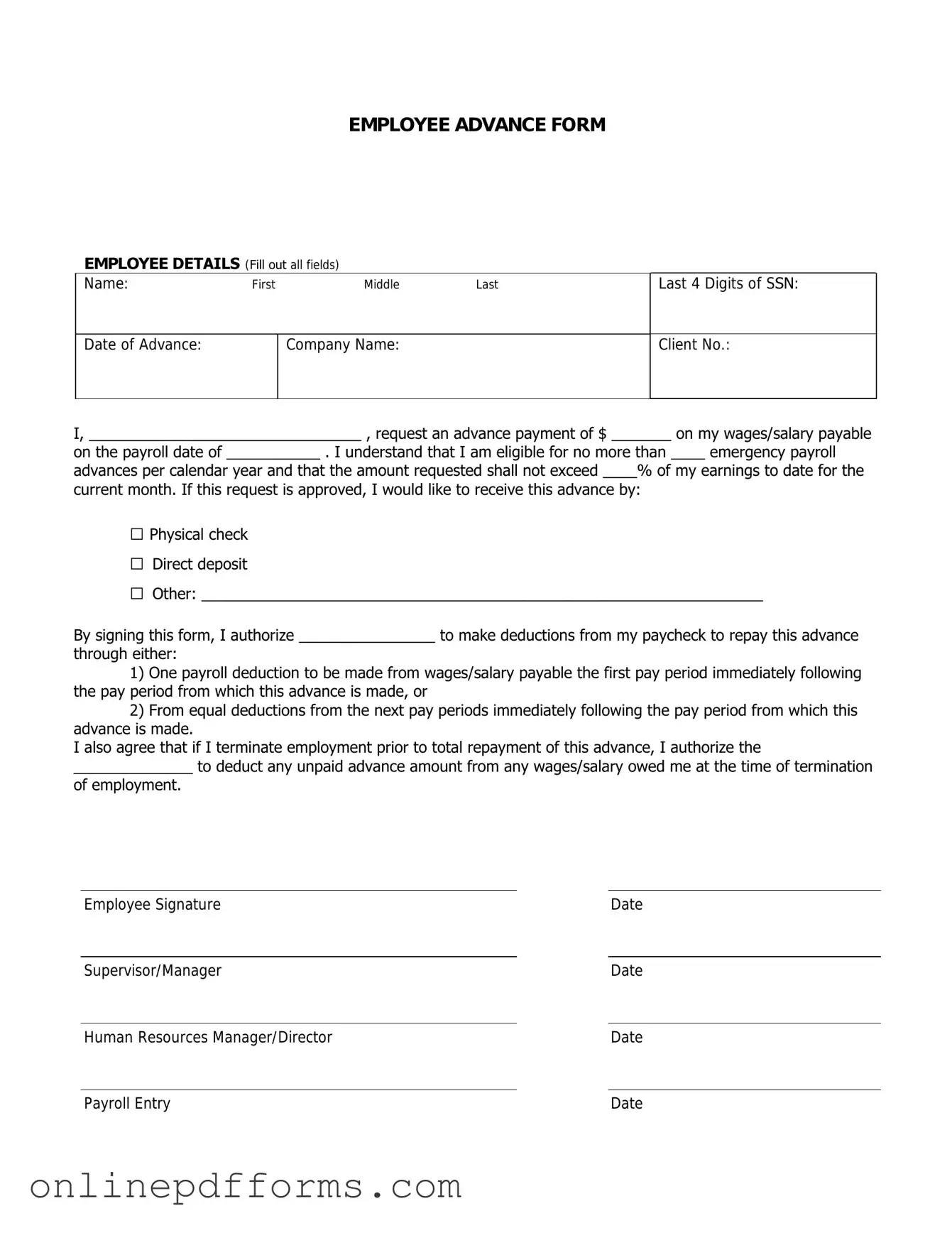The Employee Advance form is similar to the Expense Reimbursement form. Both documents serve to facilitate financial transactions between employees and the company. Employees use the Expense Reimbursement form to claim back money they have spent on behalf of the company, while the Employee Advance form allows employees to receive funds upfront for anticipated expenses. Each form requires detailed information about the purpose of the funds, ensuring transparency and accountability in financial dealings.
Another document that resembles the Employee Advance form is the Travel Authorization form. This form is often used when employees need to travel for business purposes. Like the Employee Advance form, it requires employees to outline their travel plans and associated costs. Approval is necessary for both forms, ensuring that the company monitors its expenditures effectively while supporting employee needs.
The Purchase Order form shares similarities with the Employee Advance form in that both are used to manage financial transactions. A Purchase Order is typically issued to vendors for goods or services, while the Employee Advance form is used by employees to request funds. Each document requires approval and outlines the intended use of funds, ensuring that the company maintains control over its budget.
The Petty Cash Request form is another document that functions similarly to the Employee Advance form. Employees use this form to request small amounts of cash for minor expenses incurred during work activities. Both forms require justification for the funds requested, promoting responsible financial practices within the organization.
The Payroll Advance Request form also aligns with the Employee Advance form. Employees may use this document to request an advance on their upcoming paycheck. Both forms necessitate a clear explanation of why the funds are needed and require approval from a supervisor or manager, ensuring that the organization keeps track of cash flow.
Another similar document is the Fund Transfer Request form. Employees may use this form to request the transfer of funds between different accounts within the organization. Like the Employee Advance form, it requires detailed information about the amount and purpose of the transfer, ensuring that financial transactions are well-documented and authorized.
The Vendor Payment Request form is also comparable to the Employee Advance form. This document is used to request payment to vendors for services rendered or products purchased. Both forms require a clear purpose and appropriate approvals, ensuring that the company manages its financial commitments effectively.
The Texas RV Bill of Sale is a vital document that ensures clarity and legality in the sale of recreational vehicles. Whether you are a buyer or a seller, utilizing this form is crucial for recording the transaction and providing proof of ownership transfer. For more information on how to obtain this form, visit pdftemplates.info/texas-rv-bill-of-sale-form/.
The Grant Application form shares some similarities with the Employee Advance form, particularly in terms of funding requests. Employees may apply for grants to fund specific projects or initiatives. Both documents require detailed descriptions of how the funds will be used and necessitate approval from relevant authorities within the organization.
Lastly, the Budget Request form is akin to the Employee Advance form. Employees may use this document to request funding for specific projects or departmental needs. Similar to the Employee Advance form, it requires a clear outline of the financial request and its intended use, promoting careful planning and resource allocation within the organization.
